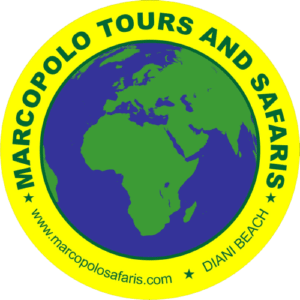Day 1:
Pick-up from your hotel in the early morning hours. First drive to Tsavo East National Park for a morning game drive until 12:30. Distance approx. 140km, travel time approx. 3h . Check-in at Ashnil Aruba Lodge and lunch at the lodge. The afternoon until 4:00 pm is at your free disposal. At 4:00 pm you will meet your driver for another evening game drive until 6:00 pm. Dinner and overnight at the lodge.
Day 2:
Breakfast early morning at 6:30am, after breakfast check-out for a game drive on the way to Tsavo West National Park with arrival at the lodge for lunch. Distance approx. 140km, journey time approx. 3h. At 4:00 pm you will meet your driver for another evening game drive until 6:00 pm. Dinner and overnight at Kilanguni Serena Lodge.
Day 3:
Early morning breakfast followed by check-out for a game drive in Tsavo West National Park followed by a return journey back to your hotel on the coast and arrival there in the afternoon. Distance approx. 300km, journey time approx. 5.5h.
Highlights:
Tsavo East and Tsavo West National Park is home to the BIG FIVE, elephant, lion, leopard, buffalo and rhino.
Tsavo West National Park
Tsavo West National Park covers an area of 9,065 km², which is approximately 30% of the total area of all parks in Kenya. Its savannahs extend from the Tanzanian border in the south, the road between Mombasa and Nairobi and the Athi River in the north. This river and the road (A 109) form the common border to the Tsavo East National Park. In the southern part between both parks there are private estates in the Taita Hills and Sagala Hills as well as in the area of the Tsavo Kasigau Wildlife Corridor. On 1 April 1948 the Tsavo National Park was established with a total area of 21,812 km2. In May 1949, for administrative reasons, the park was divided into East and West. The landscape of Tsavo West is very varied and clearly hillier, mountainous and more humid than that of the larger Tsavo East. Numerous volcanic cones rise out of the plain. The northern part of the park is dominated by Acaciaommiphora savannas with individual trees (e.g. baobabs). The landscape is characterised by individual rocks and ridges. In the densely wooded Ngulia area, some rocky hills reach altitudes of about 1,800 m. In a so-called “Rhino sanctuary” some of the last black rhinos of the region are kept in a fenced area under the protection of the Kenya Wildlife Service (KWS). At the foot of the Chyulu Hills lies the Shetani lava field, which was formed about 200 years ago and is still largely vegetation-free. The black lava purifies meltwater from Kilimanjaro, which escapes from the spring “Mzima Springs”. The spring consists of two spring basins from which 250 million litres of crystal-clear water flow daily and in which numerous hippos and Nile crocodiles live. A shelter makes it possible to observe these animals and countless fish under water. The southern sector consists of open grass savannahs. The permanently water-bearing Tsavo is accompanied by gallery forests. In the southwest corner of the park lies Jipe Lake, through which the border to Tanzania runs. It is fed by meltwater from the Kilimanjaro meltwater and rivers from the Pare Mountains. The fauna of Tsavo West is very species-rich, due to the dense vegetation the animals are often difficult to spot. Besides the “Big Five” (elephant, rhino, leopard, African buffalo, lion) there are several other mammals living here.
Tsavo East National Park
With an area of 11,747 square kilometres, the eastern part is about 2,000 km2 larger than the western part. The areas to the north of the Galana River, which is a permanent water source, about two thirds of the park, are inaccessible to visitors. The park is characterised by grass and bush savannahs and semi-desert steppes. These alternate with acacia forests, gorges, individual rock groups and island mountains. Seasonal rivers in the southern part are the Voi River and the Mbololo River. The Athi River and the Galana River are permanent waterways. The Galana River is formed above the Lugard Falls by the confluence of the Athi and Tsavo Rivers. Along the rivers there are narrow gallery forests. Standing waters can be found at Mundanda Rock (natural damming through rock face) and at Aruba Dam, in addition to smaller water holes, often created by elephants. Parts of the park are of volcanic origin. A flat and extensive lava ridge, the Yatta Plateau, runs along the western boundary in the east of the Athi River. It is the longest lava field in the world.
Route
We offer Safaris to Tsavo East, Tsavo West, Amboseli, Masai Mara, Lake Nakuru, Lake Naivasha and Tanzania as group tours or private tours.

Mobile +254 722 696 533
WhatsApp +254 702 291 817
info@marcopolosafaris.com | marcopolosafaris@gmail.com
Head office
Diani Beach Rd, Ukunda, Mombasa, Kenya
Mon – Sun 8.00 – 18.30
Nairobi office, waiyaki way
